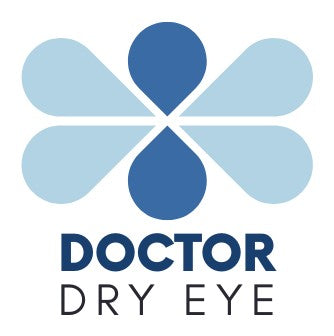Introduction
Omega-3 fatty acids are a type of polyunsaturated fat that are considered essential fatty acids, meaning they cannot be produced by the body and must be obtained through the diet. Omega-3 fatty acids are important for a number of functions in the body, including brain function, heart health, and reducing inflammation.
Omega-3’s have been used for years as a treatment for certain types of dry eye syndromes.
In this article we’re going to cover everything you need to know about dry eyes and Omega-3 Fatty Acids.
Background: What Are “Fatty Acids”?
Fatty acids are a type of molecule that is a building block of fats and oils. They are long chains of carbon atoms with hydrogen atoms attached, and they are an important source of energy for the body.
Fatty acids can be classified into several different types based on their chemical structure, including:
- Saturated fatty acids
- Monounsaturated fatty acids
- Polyunsaturated fatty acids
Saturated fatty acids
Saturated fatty acids are typically solid at room temperature and are found in animal-based foods such as meat, butter, and cheese. They are often considered to be unhealthy, as high intake of saturated fatty acids has been linked to an increased risk of heart disease.
Monounsaturated fatty acids
Monounsaturated fatty acids are typically liquid at room temperature and are found in foods such as olive oil, avocados, and nuts. They are considered to be a healthier type of fat, as they have been shown to have a number of health benefits, including reducing the risk of heart disease and improving blood sugar control.
Polyunsaturated fatty acids
Polyunsaturated fatty acids are also liquid at room temperature and are found in foods such as fatty fish, flaxseeds, and chia seeds.
They are further divided into two types:
- omega-3 fatty acids
- omega-6 fatty acids.
Omega-3 fatty acids are considered to be especially important for health, as they have anti-inflammatory effects and are important for heart and brain health.
What are Omega 3 Fatty Acids?
Omega-3 fatty acids are a type of polyunsaturated fat.
The three main types of omega-3 fatty acids are:
- alpha-linolenic acid (ALA)
- eicosapentaenoic acid (EPA)
- docosahexaenoic acid (DHA)
ALA is found in plant-based foods such as flaxseeds, chia seeds, and walnuts.
EPA and DHA are found primarily in fatty fish such as salmon, sardines, and anchovies.
Research has shown that consuming adequate amounts of omega-3 fatty acids can have a number of health benefits, including reducing the risk of heart disease, improving symptoms of depression and anxiety, and reducing the risk of certain types of cancer. It is recommended that adults consume at least two servings of fatty fish per week to obtain adequate amounts of EPA and DHA, and to incorporate plant-based sources of ALA into their diets as well.
Dry Eyes & Omega 3 Fatty Acids
Dry eye disease involves tear film dysfunction resulting in inflammation on the surface of the eye. This inflammation contributes to the sensation of irritation and pain that patients with dry eyes experience.
Anti-inflammatories have been used for decades to treat various types of dry eye syndromes.
Omega-3 and Omega-6 fatty acids impact the production of inflammatory cytokines in the body. It’s been shown that the ratio of omega-3 to omega-6 fatty acids is important to the overall inflammatory state of the body.
- In a typical Western diet, the ratio of omega-6 to omega-3 is 15-to-1
- An optimal ratio is closer to 4:1
It is, therefore, believed that increasing the amount of omega-3 fatty acid’s can have anti-inflammatory effects throughout the body, including the eye, thereby treating or preventing dry eye symptoms.
Sources of Dietery Omega 3 Fatty Acids
Omega-3 fatty acids are found in different foods. However, it is difficult to consistently get enough to achieve the optimal omega-3 to omega-6 ratio with a standard Western diet without taking a supplement.
If you’d like to increase your intake of Omega-3’s, you can try adding these foods to your diet:
- Certain fish
- Mackerel
- Salmon
- Herring
- Anchovies
- Whitefish
- Tuna
- Sardines
- Rainbow Trout
- Flaxseeds
- Chia seeds
- Walnuts
- Edamame
What to Look For In An Omega 3 Supplement?
When looking for an omega-3 fatty acid supplement, it is important to consider the following factors:
- Purity: Choose a product that has been third-party tested for contaminants such as heavy metals, dioxins, and PCBs.
- EPA and DHA Content: EPA and DHA are the two most important omega-3 fatty acids for human health. Look for a supplement that provides a high concentration of these two fatty acids.
- Dosage: The recommended daily dose of omega-3 fatty acids varies depending on age, gender, and health status. Look for a product that provides the appropriate dose for your needs.
- Form: Omega-3 supplements are available in various forms, including liquid, softgel, and powder. Choose the form that is most convenient for you.
- Brand Reputation: Choose a reputable brand that has a good track record for producing high-quality supplements.
- Sustainability: If you are environmentally conscious, look for a supplement that is made from sustainably sourced fish oil.
- Price: Omega-3 supplements can vary widely in price. Look for a product that offers a good value for the price, without compromising on quality.
Remember, it's always best to consult with a healthcare professional before starting any new supplement regimen.
How to Use an Omega-3 Supplement?
Research shows that omega-3 supplements may be most effective when they are used in addition to conventional treatment.
That means make sure you’re using artificial tears regularly, performing warm compresses, and practicing good lid hygiene.
Like most areas of life, omega-3’s are not a magic pill that will allow you to stop using these other tried & true conventional dry eye treatments.
However, for many patients, omega-3’s may provide a significant improvement in dry eye symptoms.
Summary
In conclusion, omega-3 fatty acids play a crucial role in maintaining eye health, especially in preventing dry eye syndrome. Regular consumption of omega-3 rich foods or supplementation may help reduce the symptoms of dry eye, improve tear production and overall eye health.
When choosing an omega-3 supplement, it's important to look for a product that is pure, provides a high concentration of EPA and DHA, and is produced by a reputable brand.
Always consult with a healthcare professional before starting any new supplement regimen.



